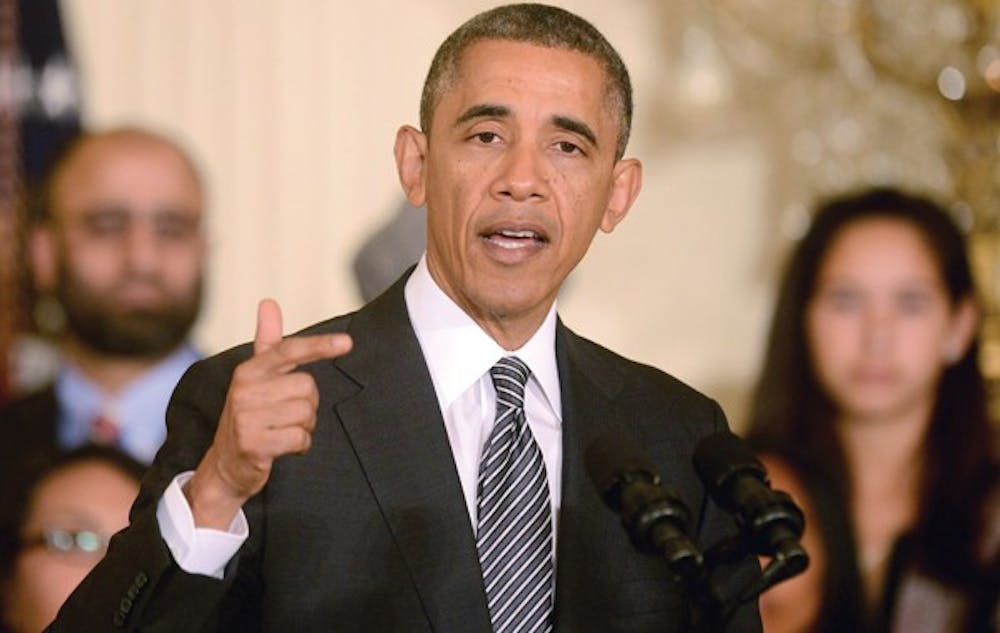Immigration reform looms as nation recovers from shutdown

After the chaos of the government shutdown and debt ceiling crisis, immigration reform might be America's next hot political topic.
President Barack Obama indicated Thursday he will push yet again for a comprehensive overhaul of the U.S. immigration system.
“We should finish the job of fixing our broken immigration system,” Obama said via press release. “Let's start the negotiations. This can and should get done by the end of this year."
The U.S. Senate previously passed immigration reform legislation this June, but it failed to pass the House of Representatives.
The Senate’s bill would create a path to citizenship for the approximately 11 million unauthorized residents currently living in the United States. It includes provisions to dramatically increase worker visas in addition to its border security.
As the Senate bill stands, all individuals who illegally reside within the United States will be granted a temporary legal status.
With this status, these individuals will then be eligible for full citizenship as soon as 13 years if they do not commit a felony or three misdemeanors.
Shikha Dalmia, senior policy analyst at the Reason Foundation, a nonprofit think-tank that advocates for “free markets and free minds,” told CM Life that this in effect grants amnesty to undocumented immigrants.
“I don’t think amnesty is a bad word,” Dalmia, who is an immigrant herself, said. “It is our laws that have created the problem in this country. I think giving these illegals citizenship and fixing our laws is the right thing to do.”
Others are less hesitant to state that this path to citizenship would be the same as granting amnesty.
CMU Director of Cultural and Global Studies and political science professor Orlando Perez, criticized the lengthy waiting time for potential citizenship.
“I think (the period) is too long, but realistically, it is probably the best we can hope for out of the legislation,” Perez said. “I would not call it amnesty; the bill is realistic about the fact is you are not going to deport 11 million people out of this country. You have to provide some pathway to legalization and eventual citizenship.”
This path to citizenship for unauthorized immigrants was coupled with provisions to increase border security.
The Senate’s reform measures double the number of Border Patrol agents to 38,405, complete construction of a 700-mile fence along the U.S.-Mexico border.
“Building the wall is counterproductive and will have little effect on (unauthorized immigration),” Perez said. “Immigration is a complex issue and must be dealt with through a comprehensive solution. Enforcement alone will not be effective.”
Economics professor Lawrence Brunner said restrictions on low-skilled immigration are justified by the fact that it diminishes the wages of low-skilled Americans.
“The net gains (of low-skilled immigration) are very small relative to the cost to the domestic workers competing with the immigrants,” Brunner said. “We do not have a point system like Canada or Australia. About five out of eight of immigrants are for family reunification. We are not thinking about bringing in people with skills and we should.”
However, Brunner agreed with Perez in that he did not believe the bipartisan efforts to increase border security would be completely effective.
“Looking only at the border would be like a football team that always goes into a goal-line stand,” Brunner said. “You’re not going to be able to run the ball on them, so you just pass over top of them. So, if you’re going to have any significant level of enforcement, it needs to be more than just at the border.”
Perez added that the process of legal immigration needs to become simpler to provide a more humane treatment of immigrants.
“You need to streamline the process for legal immigration,” Perez said “You need a pathway to legalization for the 11 million undocumented workers, a Dream Act that provides educational opportunities for the children of immigrants and an enforcement mechanism so that employers cannot exploit immigrant labor.”




